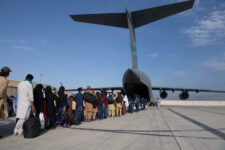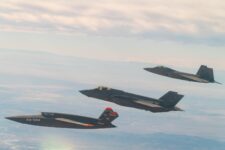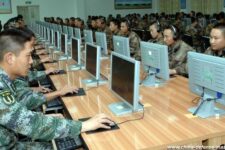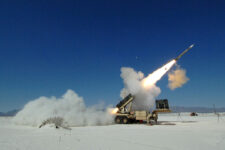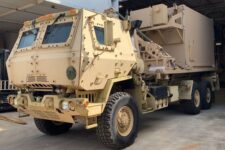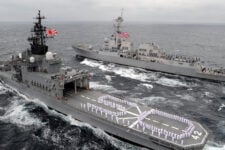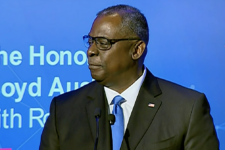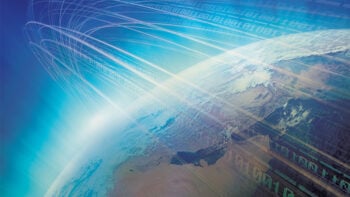 WASHINGTON: Japan is the proverbial linchpin of US strategy in East Asia. But linchpins sometimes break. As the US struggles to afford a “pivot” to the Pacific, its most important ally in the theater is undergoing a slow and painful shift of its own.
WASHINGTON: Japan is the proverbial linchpin of US strategy in East Asia. But linchpins sometimes break. As the US struggles to afford a “pivot” to the Pacific, its most important ally in the theater is undergoing a slow and painful shift of its own.
The new prime minister, Shinzo Abe of the Liberal Democratic Party (LDP), wants to increase Japan’s defense spending for the first time since 2002. In his favor: a rising consensus that a nuclear-armed North Korea and an increasingly assertive China — whose military spending blew past Japan’s in 2005 — require a stronger defense, including a reinvigorated alliance with the United States. In his way: a stagnant economy, a 70-year legacy of anti-military sentiment enshrined in the constitution, and widespread anxiety over Abe’s own hawkish leanings.
“Core supporters of the LDP may support Abe’s statement of nationalism,” said Motohiro Oono, who just weeks ago was Vice-Minister of Defense in the now-ousted government of the Democratic Party of Japan (DPJ). [But] he has to attract other coalition [partners], including leftists.”
The conservative LDP steamrollered the relatively liberal DPJ in December’s elections, Oono admitted in a talk at the Heritage Foundation last week. With a two-thirds super-majority in the lower house of parliament, Oono said, “he can change the constitution, he can pass the budget, he can pass bills” — if necessary overriding the objections of the upper house, where the DPJ still has a majority and Oono himself still has a seat — for now. But until upper house elections in July, Oono argued, Abe will focus on the ailing economy and tread lightly on security issues such as the disputed Senkaku Islands, called the Diaoyu Islands in Chinese.
Other experts downplayed the idea that Abe is dangerously right of center, however.
“Mr. Abe’s revisionist historical statements on Japan’s wartime actions are troubling,” acknowledged Heritage scholar Bruce Klingner referring to Abe’s equivocation on Japanese responsibility for atrocities in World War II, most contentiously the enslavement of Korean comfort women in Japanese army brothels. “There was a great deal of angst expressed in the punditosphere” over Abe’s return to power,” Klingner went on. “[But] the Japanese ship of state didn’t fall off the edge of the world the last time Mr. Abe was in office,” in 2007, when he arguably improved relations with South Korea.
“His cabinet selection is more on the conservative side of the LDP, there’s no doubt about that,” said James Schoff of the Carnegie Endowment for International Peace speaking to Breaking Defense after the Heritage event. “[But] this talk about the resurgence of right-wing nationalism is overblown, as a national phenomenon.”
Indeed, as contentious as the atmospherics can be over past war crimes, there’s a growing consensus in Japan that the island nation needs a stronger defense. Oono himself noted that the DPJ government had laid the fiscal groundwork for Abe’s budget increase and had earlier, in 2010, issued new National Defense Program Guidelines moving a traditional passive emphasis on securing Japanese territory to a more regionally active “dynamic defense.” The US-Japan alliance, Oono argued, can be “an axis of stability in this region.”
“What we’re seeing with the Abe government is less some sort of departure from Japanese security policy in the past and more of a gradual continuation of an evolution” in response to increasing threats, Center for Strategic and International Studies scholar Nicholas Szechenyi told Breaking Defense. “It’s a pretty pragmatic approach, it reflects fiscal realities, it reflects Japan’s interest in taking the US-Japan alliance to new levels, and it reflects public opinion.”
Even among Japan’s neighbors, Szechenyi argued, anxiety over China’s new assertiveness is outweighing old fears of Japanese imperialism: “I think other countries would welcome” Japan taking on a larger role, he said.
That said, even under Abe, Japan may not step up nearly as far as the United States, for one, would wish. “The US overestimates what Japan is willing to do,” said Schoff. “You can highlight a bunch of different little steps… going to Iraq, refueling ships in the Indian ocean, removing certain restrictions on arms exports or use of space for defense purposes; but they’re all relatively minor.” Even the proposed budget increase only reverses 11 years of decline.
“It’s long overdue [and] a small amount,” said Keio University professor Tomohiko Taniguchi, speaking alongside Oono at Heritage. Successive Japanese governments have long talked about the island nation relying less on US protection, he said, “but deeds did not follow the words.”
“Alliance and geostrategy [are] dirty words” for many Japanese, Taniguchi lamented, but “the geostrategic reality in Japan is the Japanese have to respond to the aggression the Chinese are implementing every day” with naval incursions into disputed waters.
With an aging population and an economy that grows 2-3 percent a year in the best of times, Taniguchi said, the “cruel reality” is that Japan is now “a post-modern nation surrounded by a sea of young modernizers.”
In the long term, neither demographics nor economics is on Tokyo’s side. Once touted as a rising superpower, Japan is increasingly overshadowed by its rapidly growing neighbors, from India and Indonesia to the Philippines and Vietnam — and above all, of course, the People’s Republic of China.
“The Chinese economy is growing and the Chinese are very patient,” said Szechenyi. While recent Chinese assertiveness over the Senkaku/Diaoyu Islands and the Scarborough Shoal in the South China Sea to some degree reflects nationalist posturing by new leaders in Beijing, “fundamentally this is not about Chinese politics, it’s about a Chinese strategy to assert its interest in the maritime domain, not just near Japan but all the way down to Southeast Asia,” he said. “I would expect this kind of probing exercises to continue.”
But while Japan may be down in relative terms, it is still very far from out, said Schoff: “Japan is still an economically strong and technologically strong and financially strong country.”
No service can fight on its own: JADC2 demands move from self-sufficiency to interdependency
Making all-domain operations a warfighting capability means integrating, fusing, and disseminating a sensor picture appropriate for a particular theater segment, not all of them, says the Mitchell Institute’s David Deptula.



